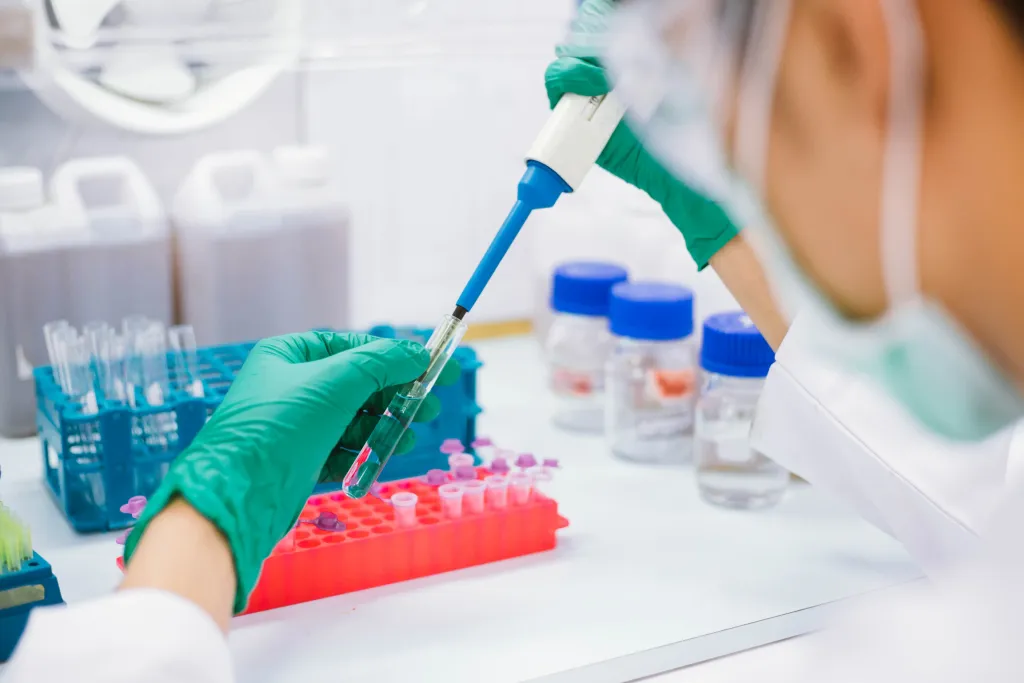What is Blastic Plasmacytoid Dendritic Cell Neoplasm?
Blastic plasmacytoid dendritic cell neoplasm (BPDCN) is a rare and aggressive type of blood cancer previously known as blastic natural killer (NK) cell lymphoma or CD4+/CD56+ hematodermic neoplasm.
BPDCN is a cancer of a very specific type of blood cell. These cells are found in the skin and other organs, lymph nodes, bone marrow, peripheral blood, and the central nervous system. Notably, about 90% of patients with BPDCN have skin lesions. These skin lesions may appear as rashes, bruise-like patches, plaques, or nodules.
Why Do People Get Blastic Plasmacytoid Dendritic Cell Neoplasm?
The exact cause of BPDCN is not known. No definitive genetic or environmental risk factors for BPDCN have been identified. There are mutations that occur in BPDCN cells that also occur in other blood cancers like MDS and AML.
Who Gets Blastic Plasmacytoid Dendritic Cell Neoplasm?
It is estimated that BPDCN occurs in 500-1,000 individuals in the United States each year. BPDCN primarily affects older adults, with the average age of diagnosis being around 60–70 years. However, it can also occur in younger adults and in children. BPDCN is more common in men than women, though the reason for this difference is poorly understood.
Want to Learn More About Blastic Plasmacytoid Dendritic Cell Neoplasm?
Keep reading HealthTree for Blastic Plasmacytoid Dendritic Cell Neoplasm's 101 pages!
- How Is Blastic Plasmacytoid Dendritic Cell Neoplasm Diagnosed?
- How Long Will I Live With Blastic Plasmacytoid Dendritic Cell Neoplasm?
- What Are The Signs And Symptoms Of Blastic Plasmacytoid Dendritic Cell Neoplasm?
- How Is Blastic Plasmacytoid Dendritic Cell Neoplasm Staged And Classified?
- What Are Treatments For Blastic Plasmacytoid Dendritic Cell Neoplasm?
Sources:
BPDCN:Multi-Center Collaboration and Global Registry Program
New BPDCN treatment improves outlook for many patients
North American BPDCN Consortium: position on standards of care and areas of need
Blastic plasmacytoid dendritic cell neoplasm (BPDCN) is a rare and aggressive type of blood cancer previously known as blastic natural killer (NK) cell lymphoma or CD4+/CD56+ hematodermic neoplasm.
BPDCN is a cancer of a very specific type of blood cell. These cells are found in the skin and other organs, lymph nodes, bone marrow, peripheral blood, and the central nervous system. Notably, about 90% of patients with BPDCN have skin lesions. These skin lesions may appear as rashes, bruise-like patches, plaques, or nodules.
Why Do People Get Blastic Plasmacytoid Dendritic Cell Neoplasm?
The exact cause of BPDCN is not known. No definitive genetic or environmental risk factors for BPDCN have been identified. There are mutations that occur in BPDCN cells that also occur in other blood cancers like MDS and AML.
Who Gets Blastic Plasmacytoid Dendritic Cell Neoplasm?
It is estimated that BPDCN occurs in 500-1,000 individuals in the United States each year. BPDCN primarily affects older adults, with the average age of diagnosis being around 60–70 years. However, it can also occur in younger adults and in children. BPDCN is more common in men than women, though the reason for this difference is poorly understood.
Want to Learn More About Blastic Plasmacytoid Dendritic Cell Neoplasm?
Keep reading HealthTree for Blastic Plasmacytoid Dendritic Cell Neoplasm's 101 pages!
- How Is Blastic Plasmacytoid Dendritic Cell Neoplasm Diagnosed?
- How Long Will I Live With Blastic Plasmacytoid Dendritic Cell Neoplasm?
- What Are The Signs And Symptoms Of Blastic Plasmacytoid Dendritic Cell Neoplasm?
- How Is Blastic Plasmacytoid Dendritic Cell Neoplasm Staged And Classified?
- What Are Treatments For Blastic Plasmacytoid Dendritic Cell Neoplasm?
Sources:
BPDCN:Multi-Center Collaboration and Global Registry Program
New BPDCN treatment improves outlook for many patients
North American BPDCN Consortium: position on standards of care and areas of need
Trending Articles
Get the Latest Blastic Plasmacytoid Dendritic Cell Neoplasm Updates, Delivered to You.
By subscribing to the HealthTree newsletter, you'll receive the latest research, treatment updates, and expert insights to help you navigate your health.
Together we care.
Together we cure.
3x Faster.




